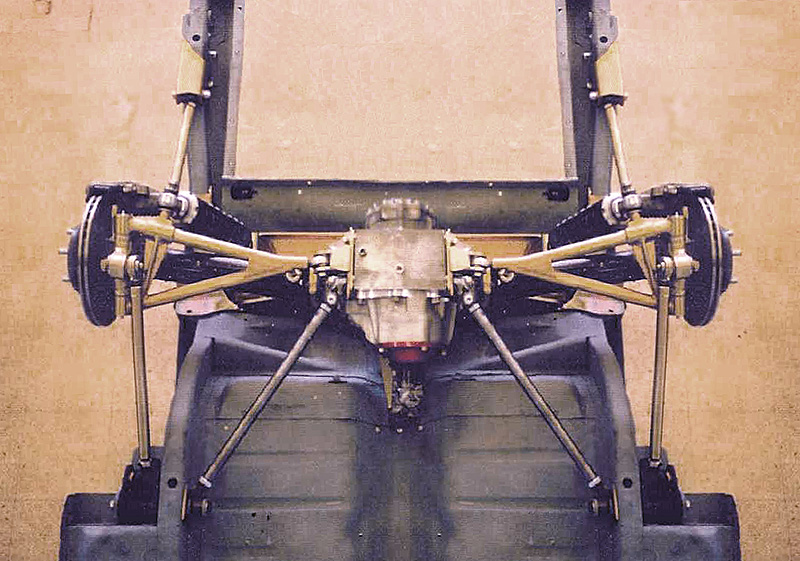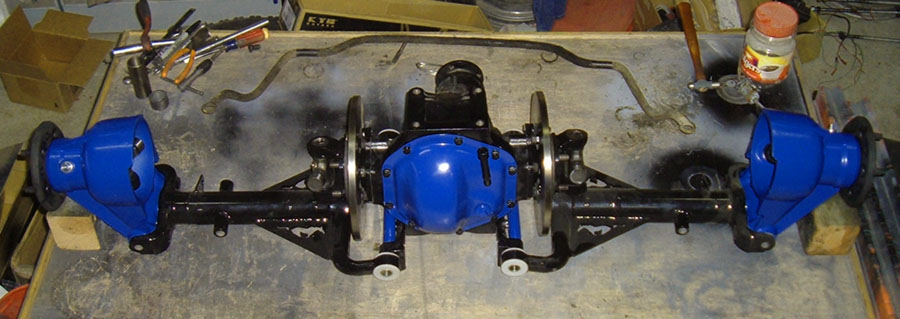

 |
 |
 |
 |
 |
You are not logged in. Would you like to login?
 1 of 1
1 of 1
![]() Offline
Offline

on May 27, 2010, 10:10 am, Daze wrote:
After our discussion yesterday I wanted to really get a good grasp on U-joints, CV-joints and pinion angle. I have come to a couple of conclusions but now I do not know what I want to do. In theory I should be able to set up my differential, as I had planned, in the correct orientation with transmission as long as the output yoke and pinion flange are parallel on ALL axis with no more than 2º variation in any direction or combination of directions.
A single, Double Cardan, will most likely not work in our application unless we are really lucky. Most likely two Double Cardan joints will be needed. Wickipedia, driveline 101 and many other sites have convinced me that I can theoretically set up my differential to minimize drive line vibration and maximize u-joint life. The real world application of it will be extremely difficult at best, not to mention the compromise of not having the suspension travel completely vertical in relation to the car. Because of these factors, I started taking a serious look at the double Cardan.
The problem with a single double Cardan is that in our application the differential must be fixed in a specific location, and unless that specific location just happens to be the correct one a single, double Cardan. Is not going to work. The problem is the single u-joint on the other end of the drive shaft. For this 3 u-joint system to work the single Cardan joint must be perfectly perpendicular to either the output of the transmission or the input of the differential. On a 4 X 4 where the double Cardan is most commonly used proper single Cardin alignment can be achieved by putting the double Cardan joint on the transmission end of the drive shaft and then adjusting the pinion angle of the differential. Problem is if we do that with the IRS differential we are changing the suspension caster which means we might as well go back to plan A and mount the differential at the correct matching pinion angle to the transmission to begin with.
The most ideal solution would be a double Cardan at both ends, that way each end of the drive shaft would take care of it self. The thing that concerns me is with all the moving joints, AND A SLIP YOKE the driveshaft might flop around. My only real word experience with a double Cardan joint has been on a steering column and when used a stabilizer, in the form of a large heim joint, had to be installed on the shaft to keep it from flopping around. I worry that there would be a similar problem on the drive shaft, especially since the front yoke is a slip yoke. I have put a call in to a local driveline shop that I know and trust to see if I can get some answers, but I have not herd back from them yet.
All I know for sure is that I was happier when I thought I new which way I wanted to go. I am almost ready to hang the differential so I need to get this figured out ASAP.
Also for what it is worth here is the best price I found on a double cardan H-yoke to fit a standard 1310 Ford u-joint
Thought??

![]() Offline
Offline

on May 27, 2010, 11:02 am, Joe wrote:
Re: A driveline expert from my local shop is coming to look at my project @ 5:00 PM MST so...My research has also not put me on difinitive path. I am most curious about his thoughts regarding single vs double cardan joints. Thanks!

![]() Offline
Offline

on May 27, 2010, 8:52 pm, Daze wrote:
I have some answers fist of all one double cardan is out unless the drive line just happens to be the same angle as the pinion or the trans, but we knew that.
two double cardans will not work because its to perfect. He even showed it to me in his reference books you do NOT want the angle of the pinion to be perfectly matched with the trans or the u-joints will not work perfectly. u-joints need at least a 1º difference or the needles will slide instead of role which will cause them to where out faster. With a double cardan on each end the operating angle of each u-joint would be 0 as each pare cancels it self out.
He said my best bet was to set the pinion angle and not worry about the added caster, or compromise, set the pinion a couple of degrees off say at 3º up and then the u-joint will have the angle it needs and there will be less caster. either way I can run a normal drive shaft with a single u-joint at each end. This guy was not only a drive line expert but also a car guy, his input was very helpful.

![]() Offline
Offline

on May 28, 2010, 5:53 am, Joe wrote:
Many thanks to the car guy 3 degrees and a single cardan sounds like a pretty good plan especially when it comes from an expert and a car guy

![]() Offline
Offline

on May 28, 2010, 8:22 am, Daze wrote:
Oh, I forgot to add, he said if I was running an OEM Mustang trans... which typically hang down at 3º than I could simply mount the differential at 0º and run a normal drive line with a u-joint at each end with no issues because the operating angle for a u-joint is 1-3º with no ill effects like vibration or u-joint life reduction. He said this is especially true on a system with a solid mounted differential. On a system where the differential moves the angle changes so you would not want to put it at the max u-joint operating angle, but the max would be perfect for an application like yours.

![]() Offline
Offline

on May 28, 2010, 5:27 pm, Joe wrote:
T5 Sounds like you are all set ... when I bought my Mustang it had a T5 already installed, one of the reasons I bough it. Fifth gear and 2100 on the tach and I am cruising in the fast lane ... makes driving tons of fun. I know they replaced the cross member under the trans and I have no idea what mount they used so I guess it's time to get underneath and find out what angle this horse is hanging

![]() Offline
Offline

on May 28, 2010, 8:00 pm, Daze wrote:
I have a T5 in both my Mustang and my Galaxie and I would bet money you are... 5º down. you may want to slightly tilt your rear end up a couple of degrees.

![]() Offline
Offline

on May 28, 2010, 8:47 pm, Daze wrote:
Just curious, how is the clutch actuated?
cable
hydraulic
modified OEM z-bar

![]() Offline
Offline

on May 29, 2010, 7:34 am, Joe wrote:
The expanding project I started this project well over a year ago with the intent of just swapping out the 9" for the Jag rear end. And what happens, of course, is you be come educated on the things that must change which then makes you (me anyway) start thinking about the other things that you want to change. So the Jag rear end project now has 18 somewhat related sub-projects.
One of must change parts was the brake master. I currently run disc in the front and shoes in the rear. When researching master cylinders I became interested in the hydraulic clutch conversion thanks in part to your article. I currently run a cable and it works OK but I don't like the routing through the engine compartment plus underneath it runs through my long tube headers.
In your article, I liked the slave side of the conversion. I have already fabbed up the bracket and purchased the slave cylinder from Speedway. I built a custom bellcrank using a heimjoint to mount the clutch rod to the clutch fork. The firewall/pedal side needed a little better presentation though. So I have purchased a new set of wilwood pedals, brake and clutch masters.

 1 of 1
1 of 1